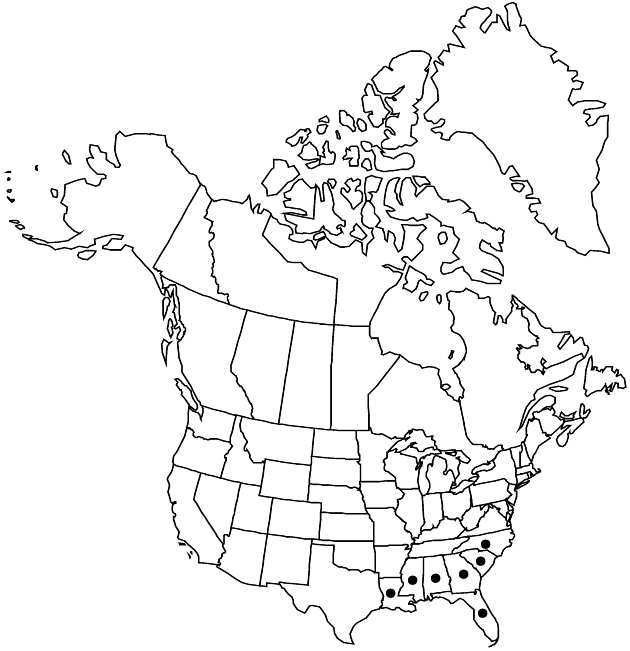Vernonia angustifolia
Fl. Bor.-Amer. 2: 94. 1803.
Plants 5–10+ dm. Stems sparsely appressed-puberulent, glabrescent. Leaves mostly cauline; blades (mid-stem) lance-linear to filiform, 5–12 cm × 2–4 (–8+) mm, l/w = (8–) 12–30 (–60+), abaxially glabrous but for scattered hairs on midribs or scabrellous (hairs awl-shaped), resin-gland-dotted or not, adaxially scabrellous. Heads in ± corymbiform to paniculiform arrays. Peduncles 8–25 mm. Involucres ± campanulate to obconic, 5–7 (–10) × 4–6 (–9) mm. Phyllaries 22–45+ in 5–6 series, sparsely scabrellous, glabrescent, margins ciliolate, the outer lanceolate to subulate, 1.5–3 mm, inner lanceovate to lanceolate, 5–9+ mm, tips acuminate to subulate. Florets 12–20 (–30). Cypselae 2.5–3 mm; pappi stramineous to purplish, outer scales 25–30, 0.5–1.2+ mm, contrasting with 35–40+, 5.5–6+ mm inner bristles. 2n = 34.
Phenology: Flowering Jun–Aug.
Habitat: Pine barrens, oak woodlands
Elevation: 10–50 m
Distribution

Ala., Fla., Ga., La., Miss., N.C., S.C.
Discussion
Selected References
None.
Lower Taxa
"dm" is not declared as a valid unit of measurement for this property."dm" is not declared as a valid unit of measurement for this property.